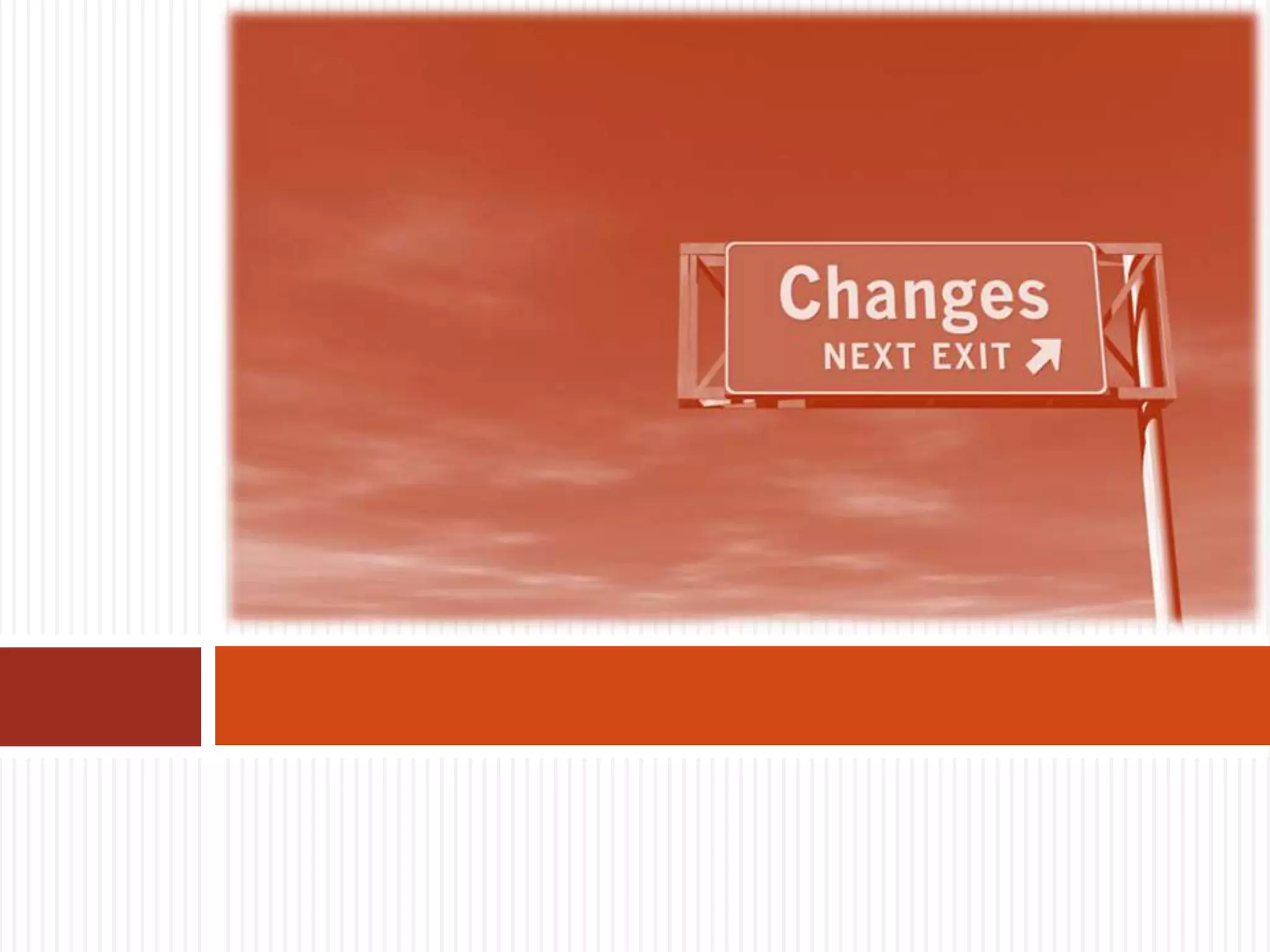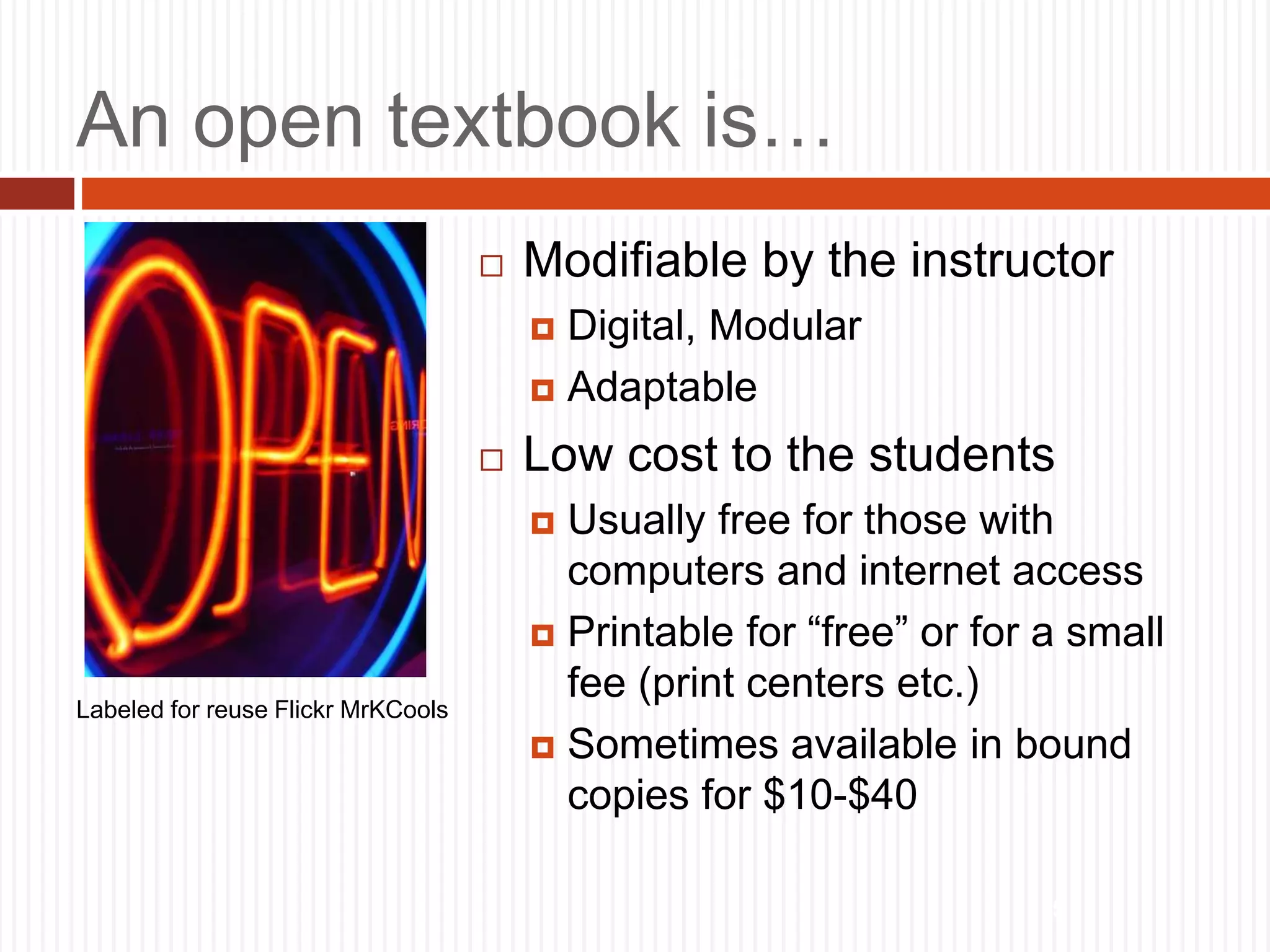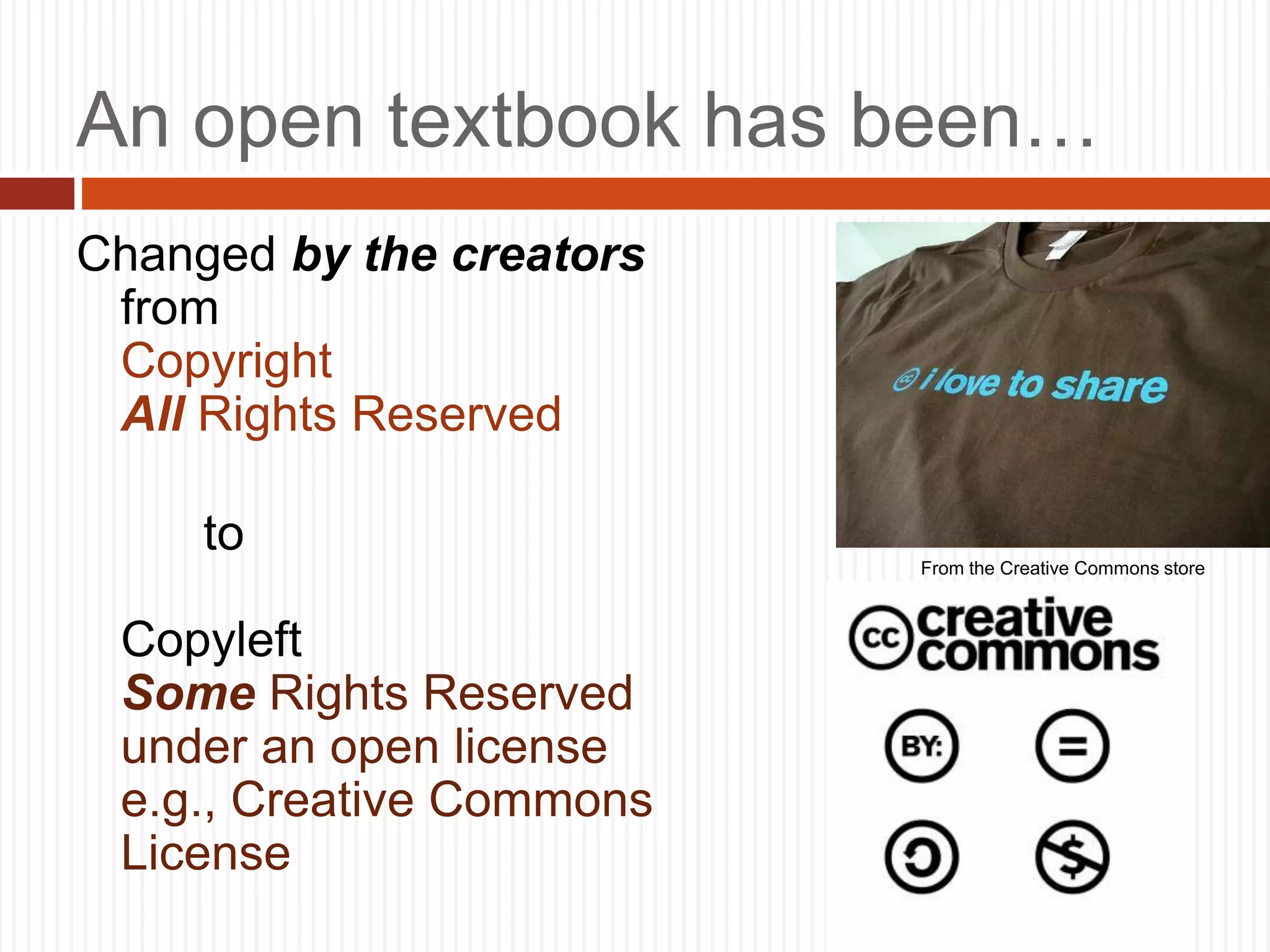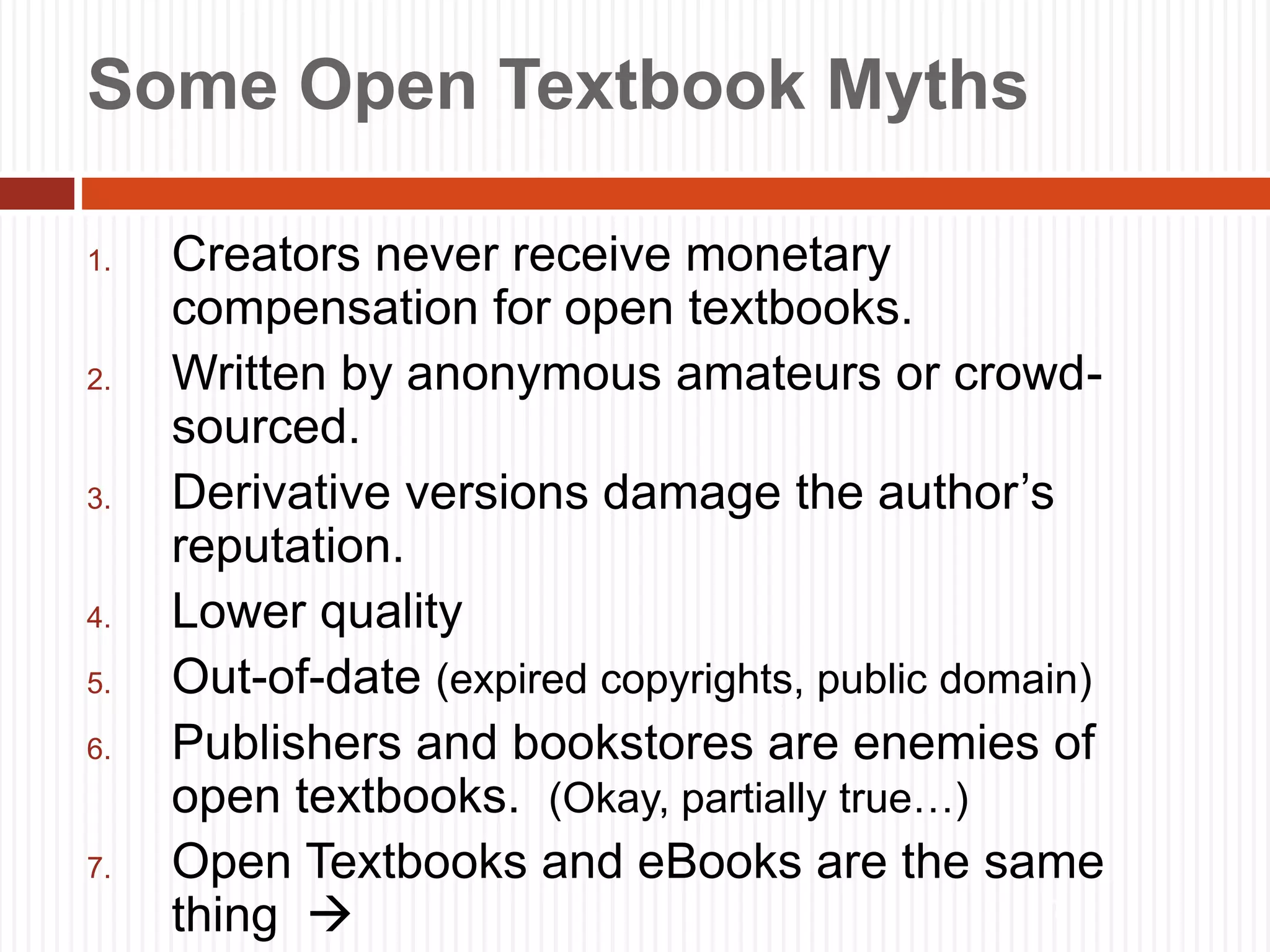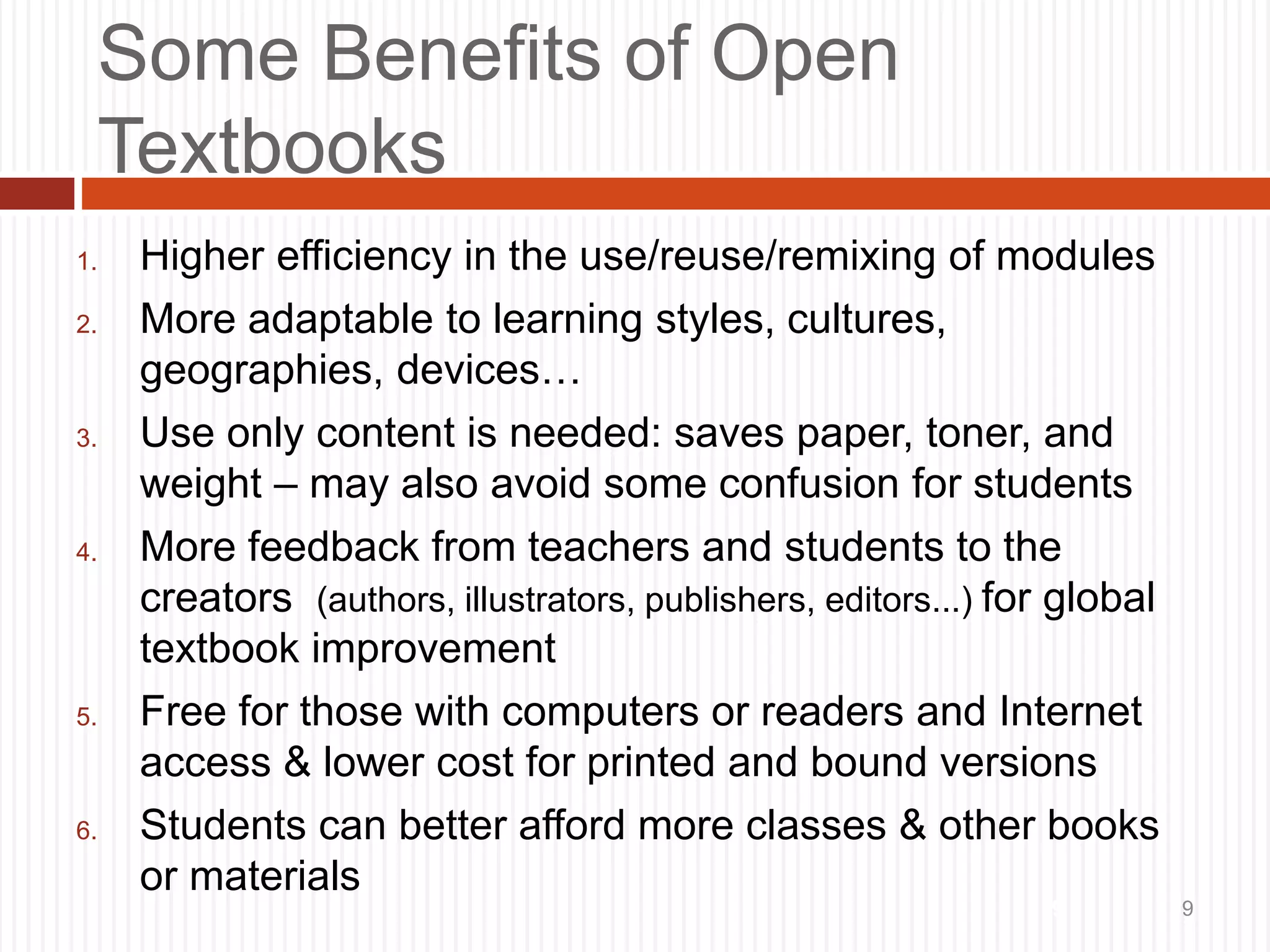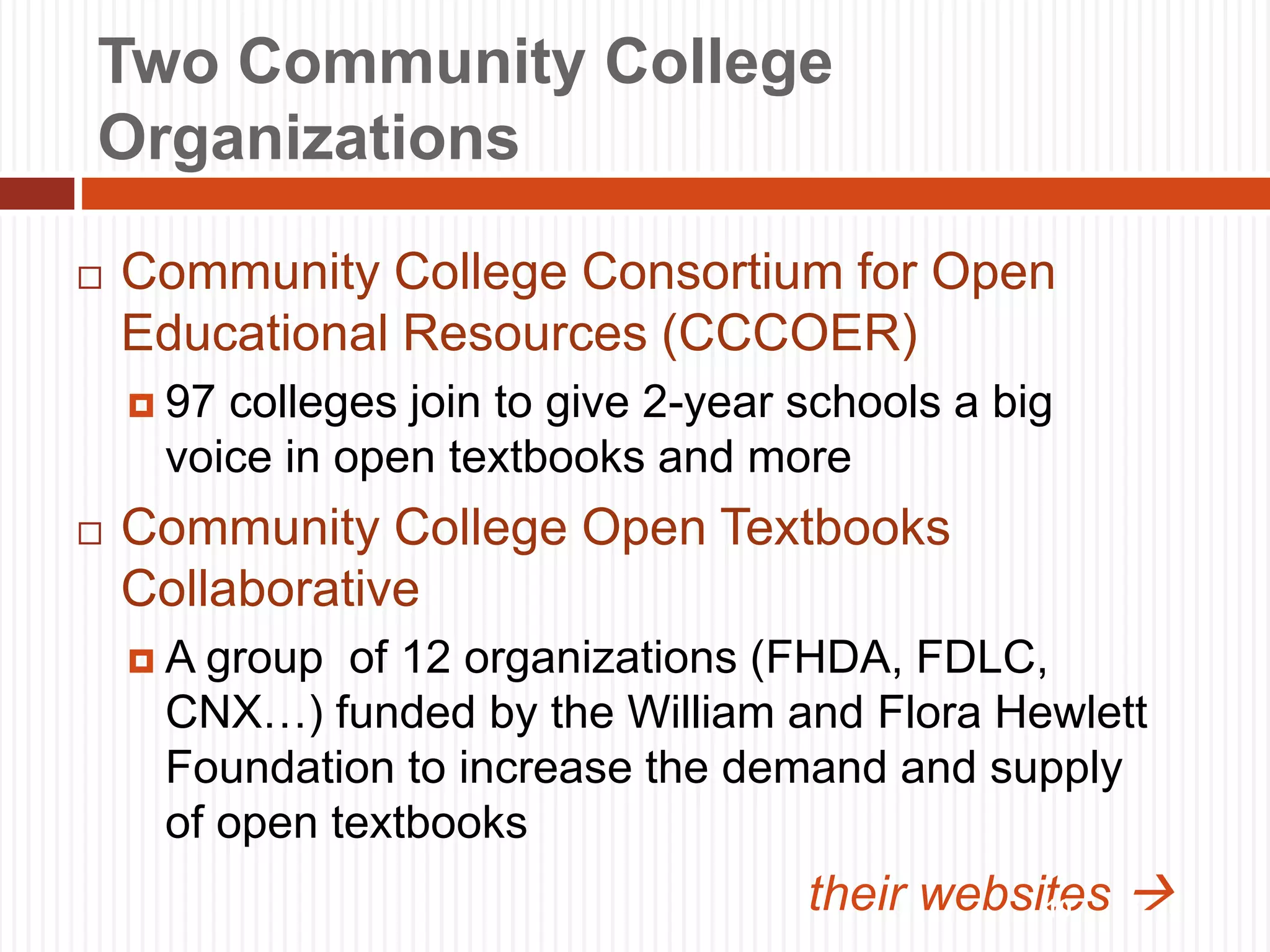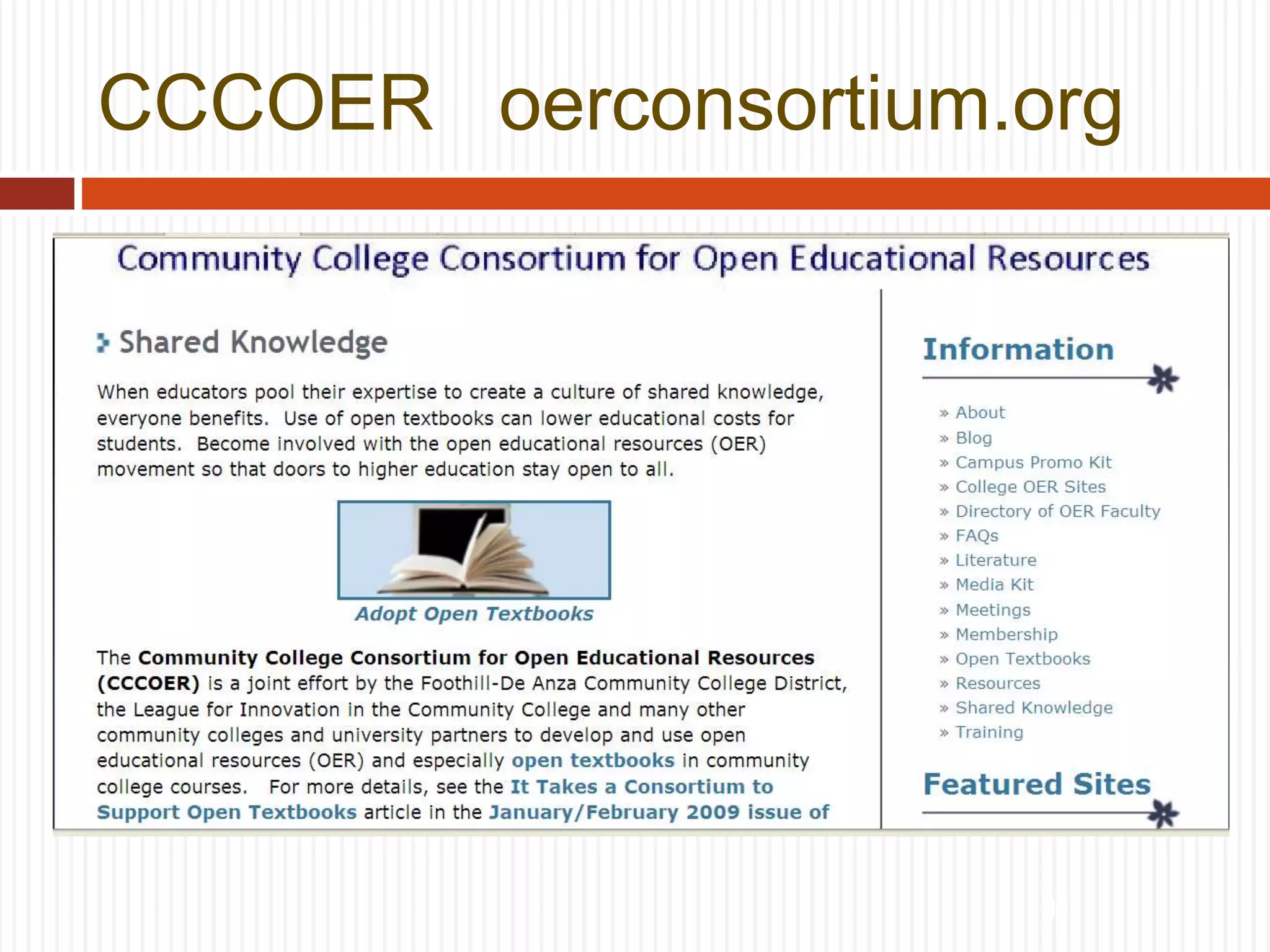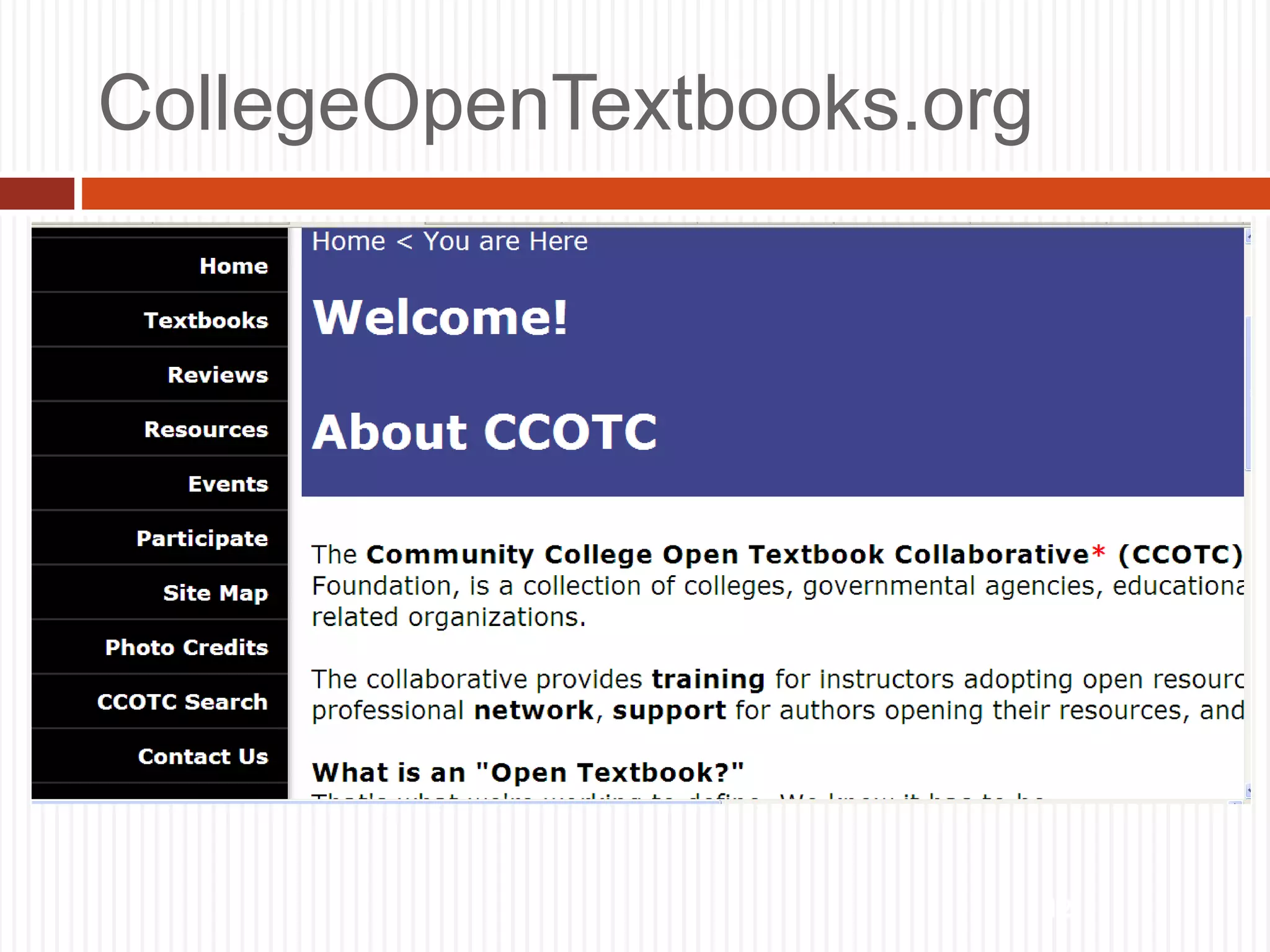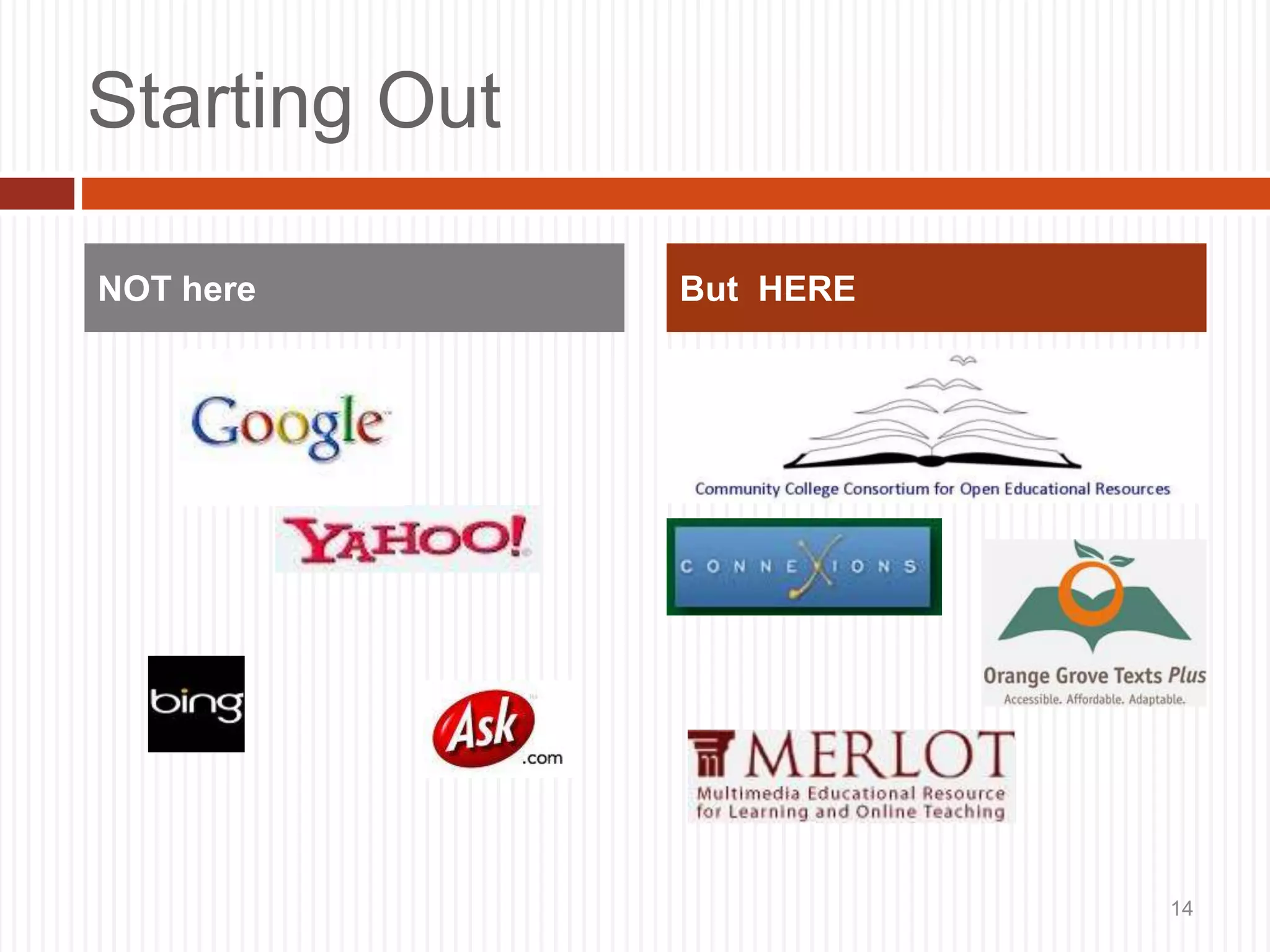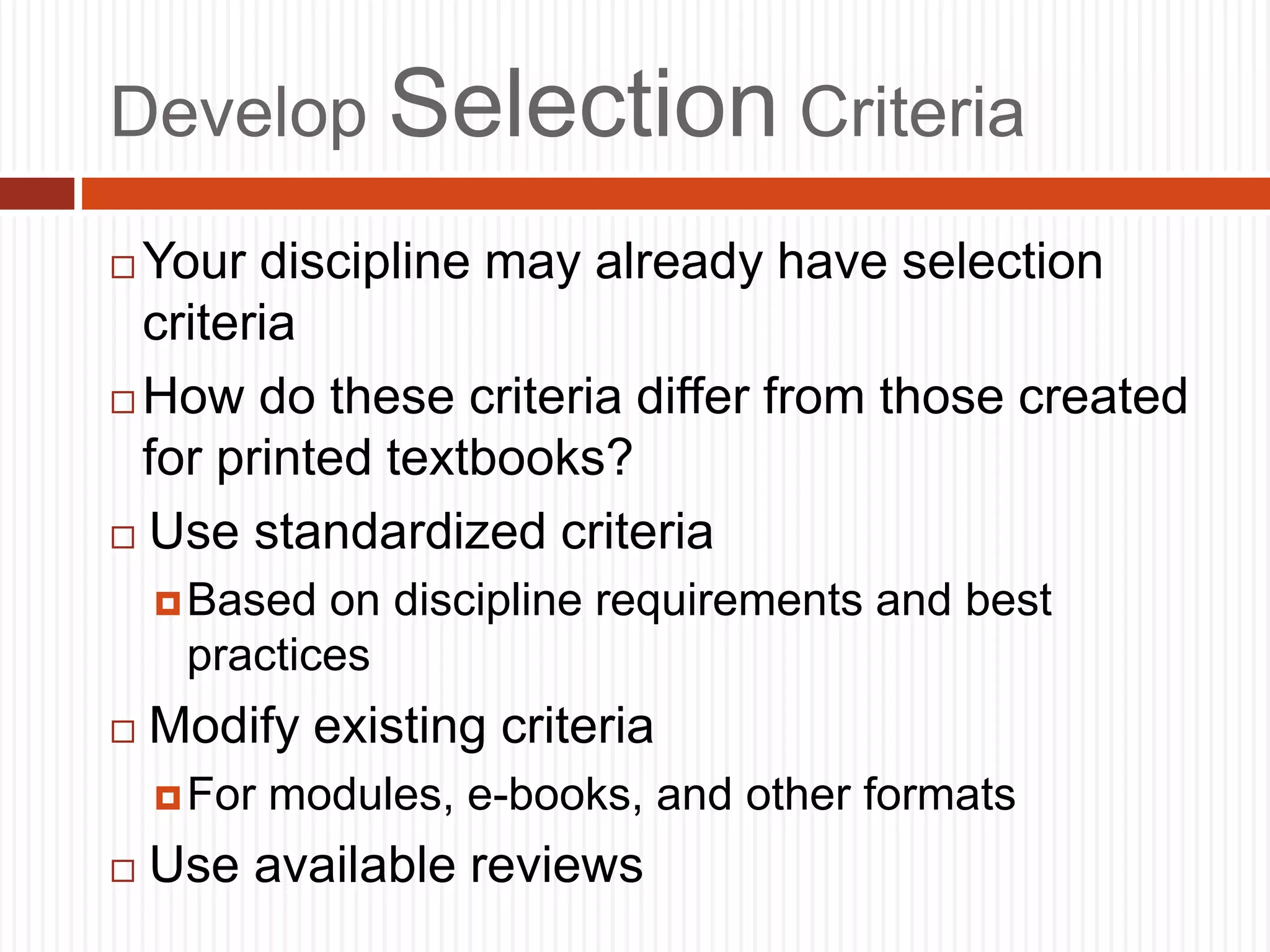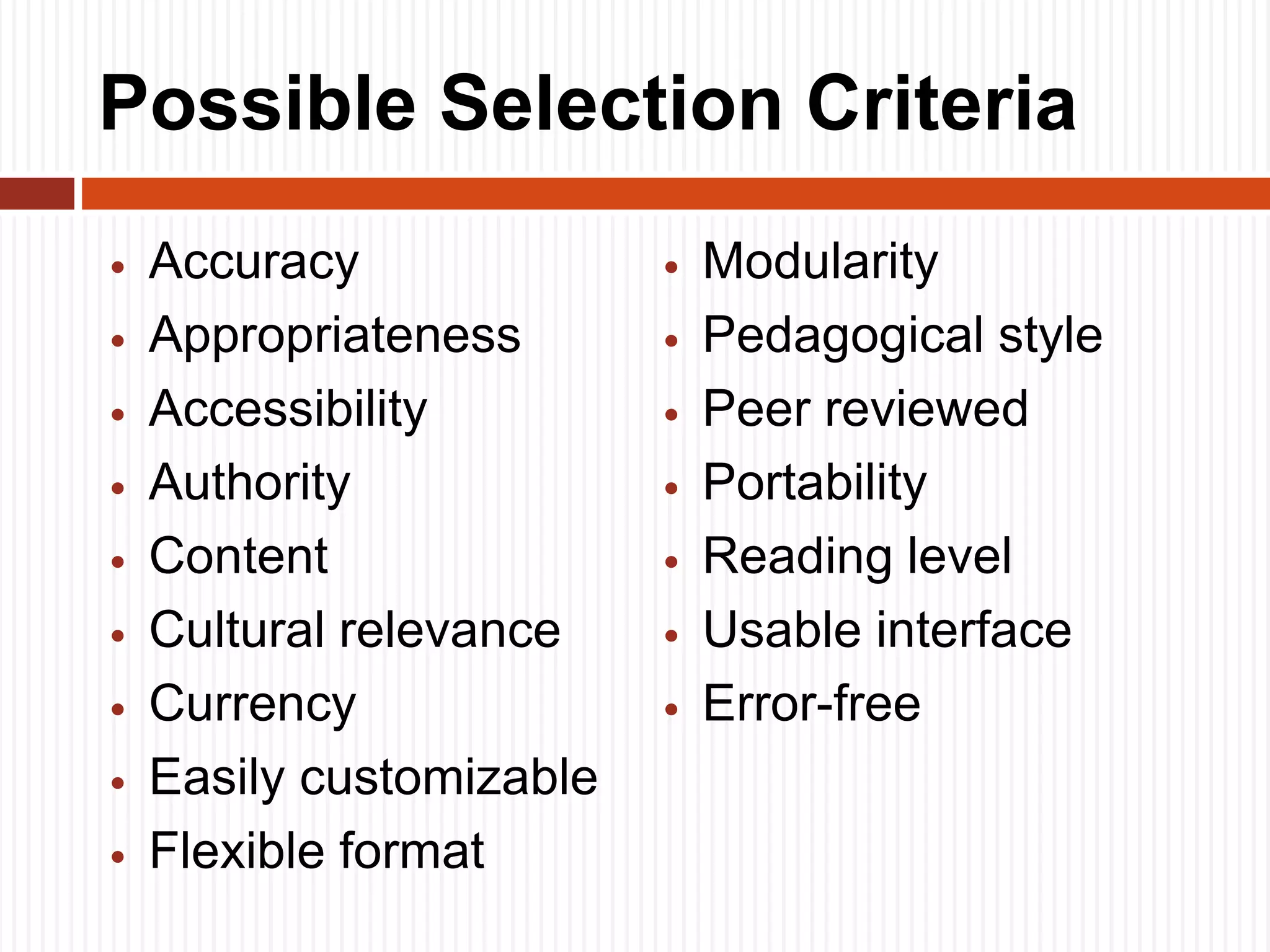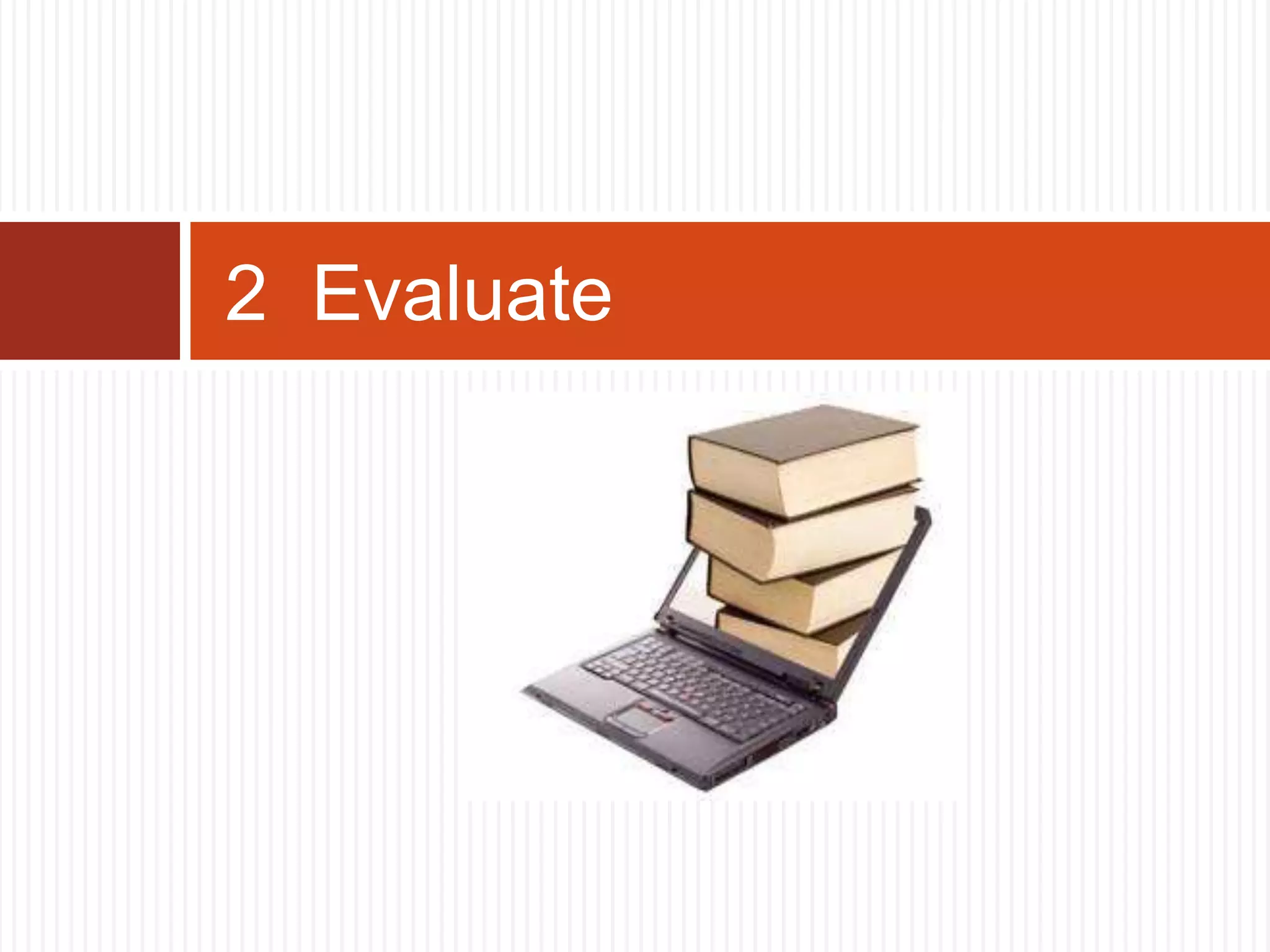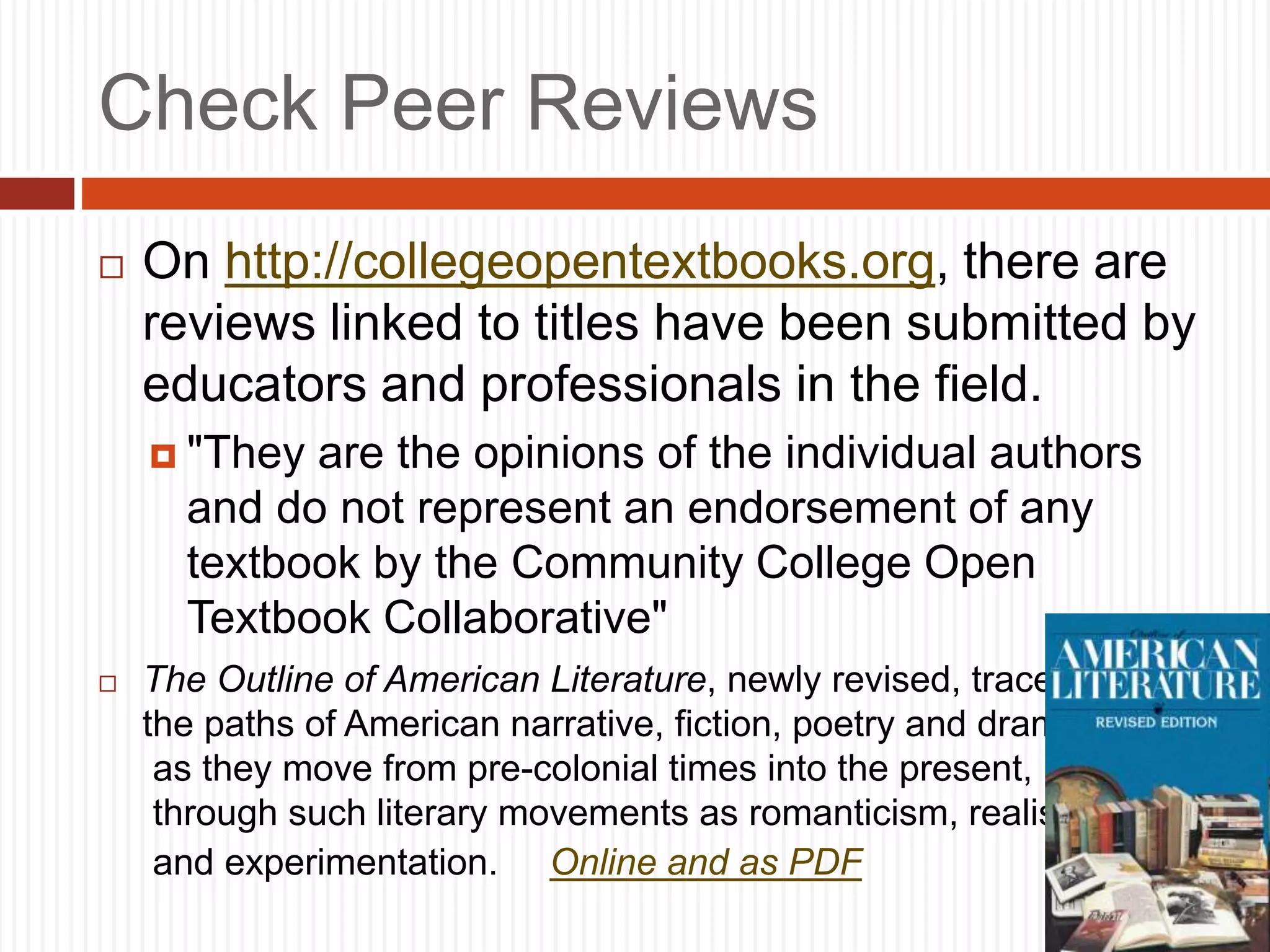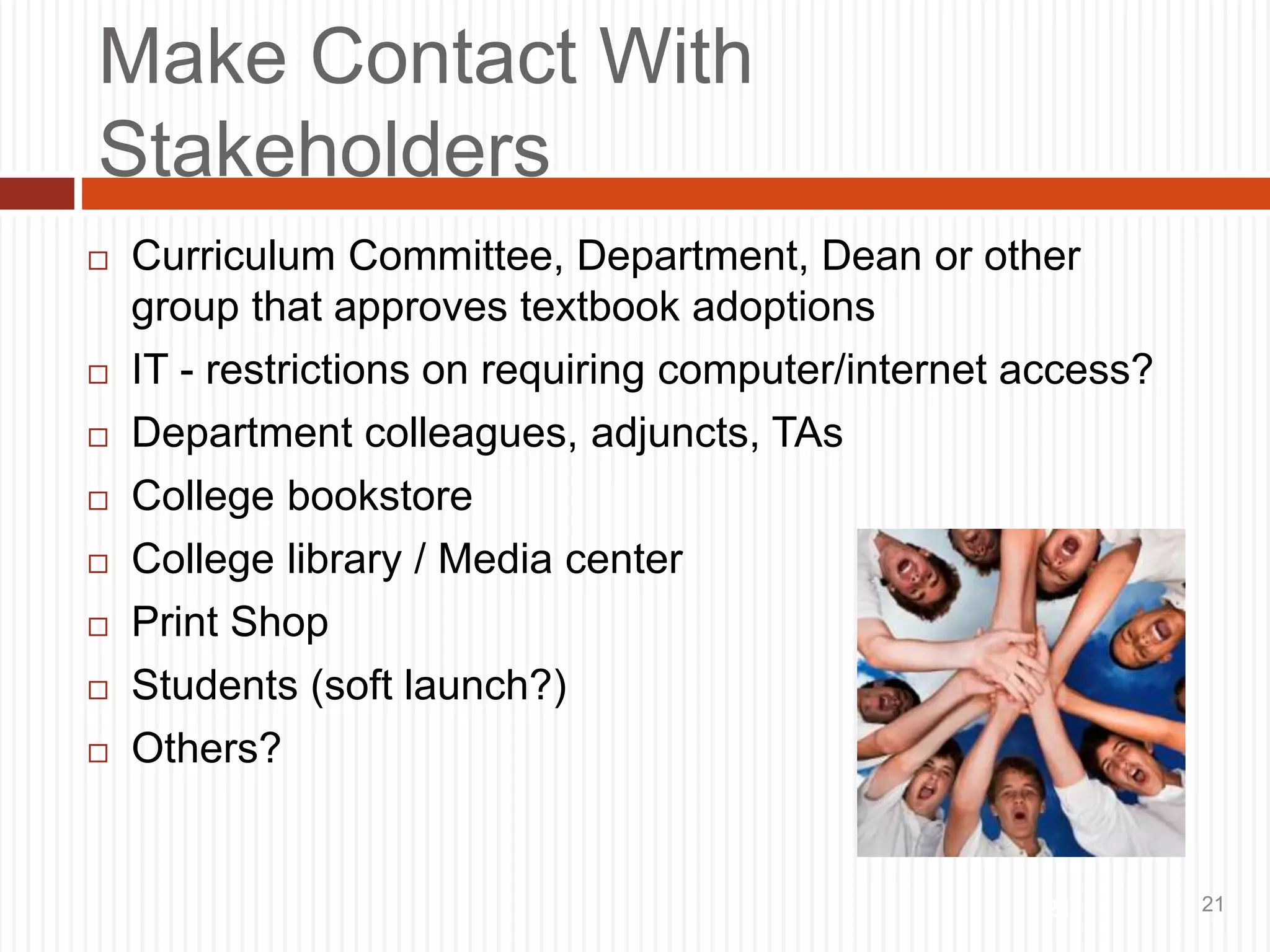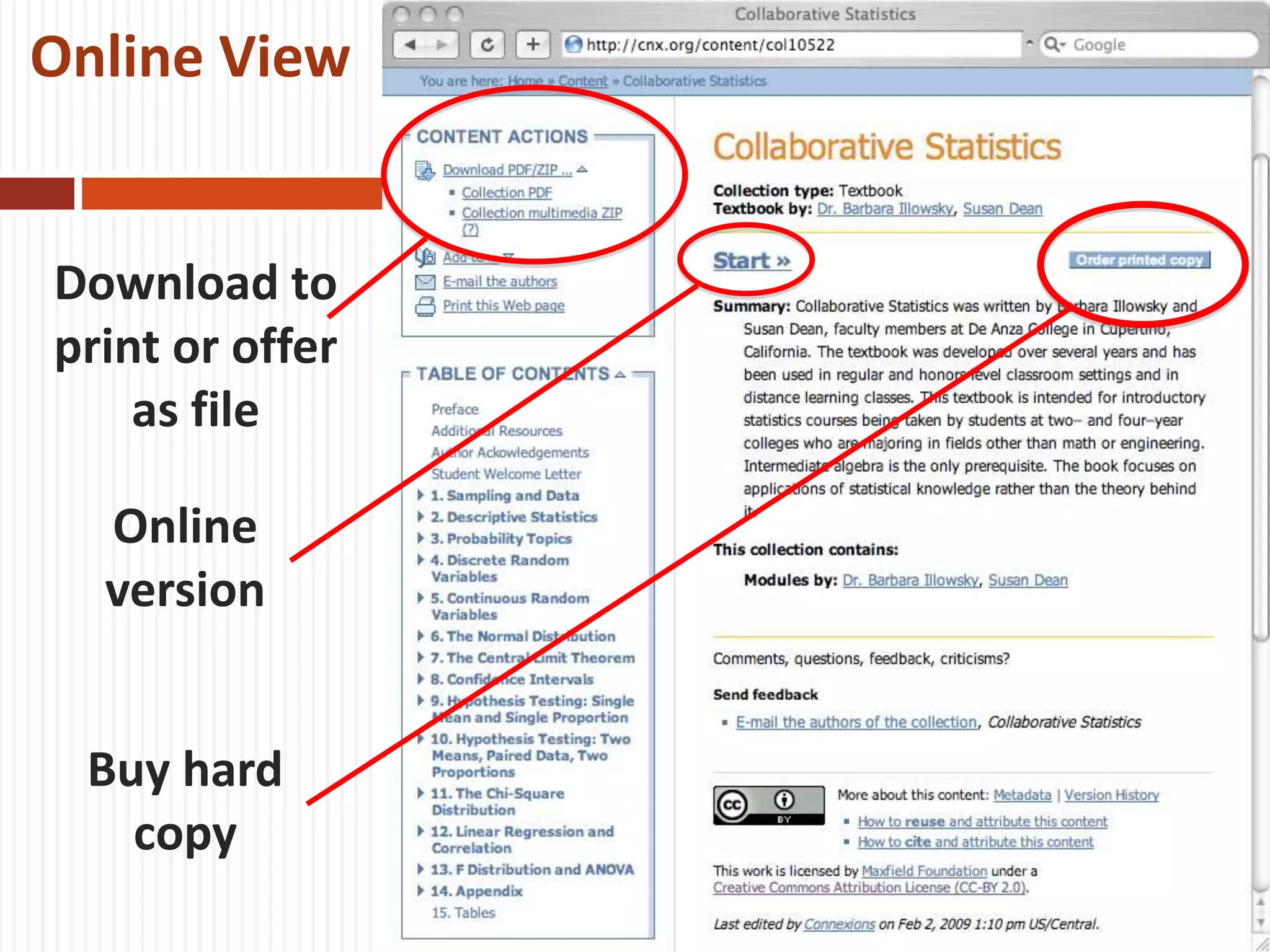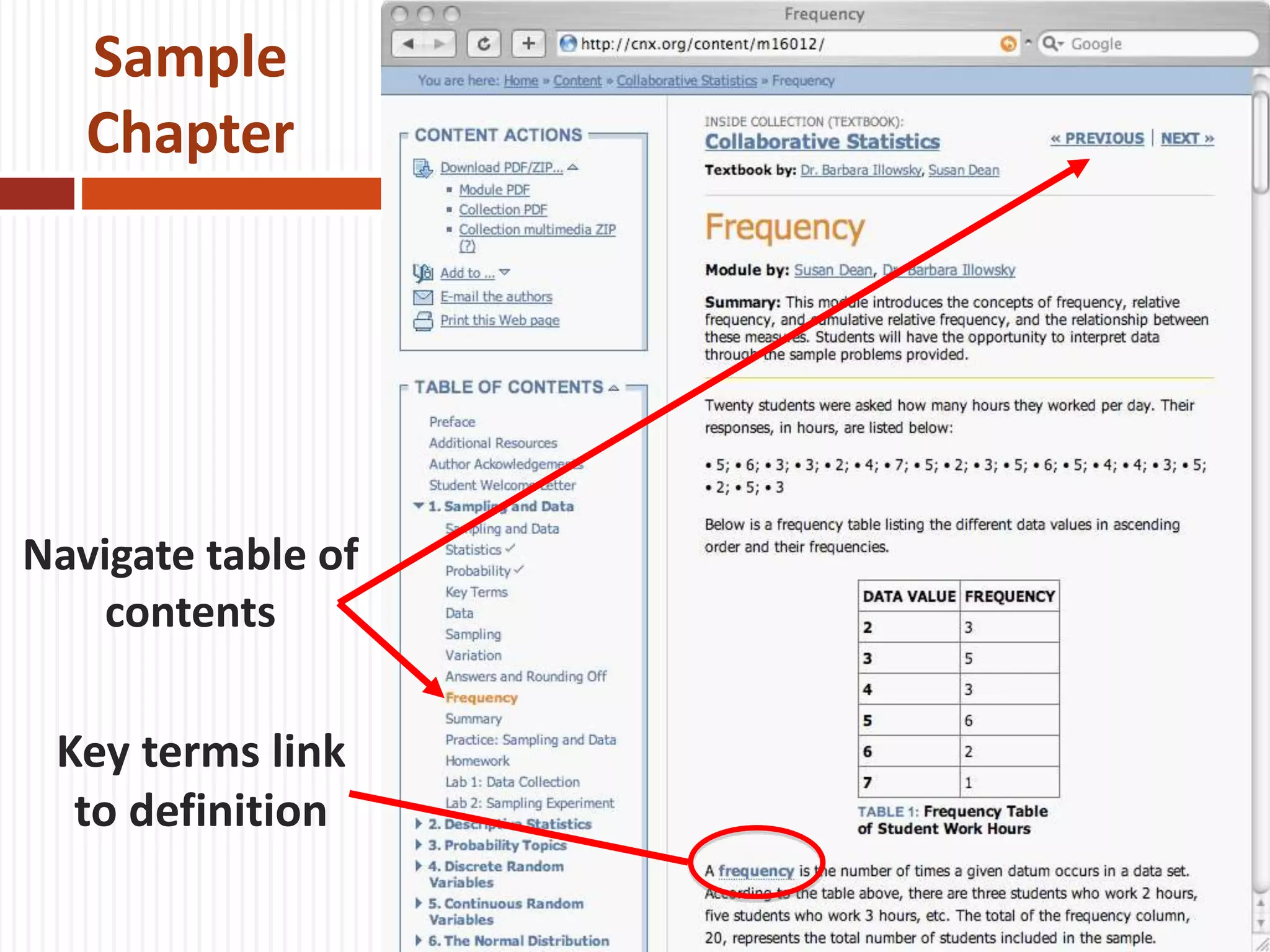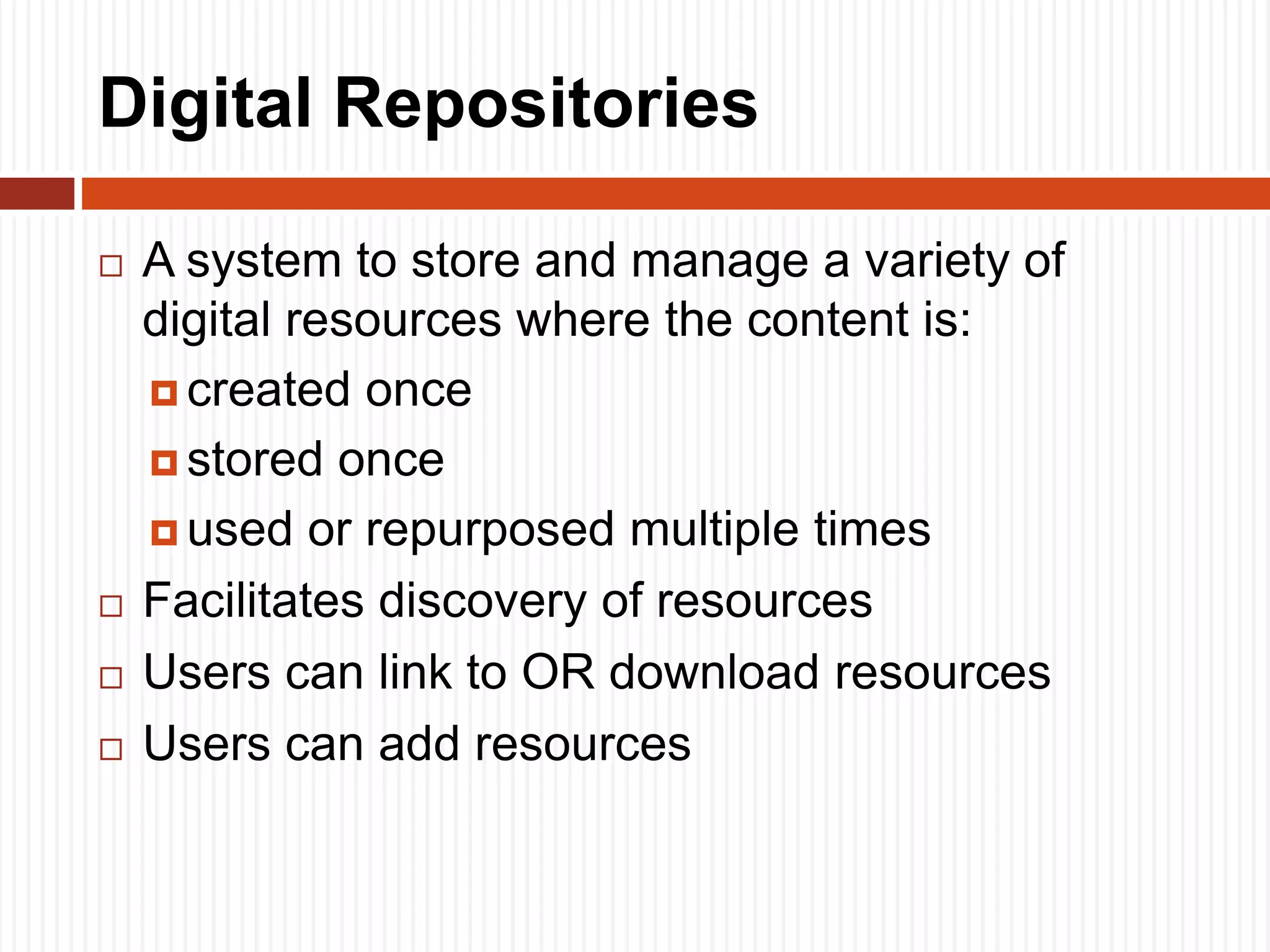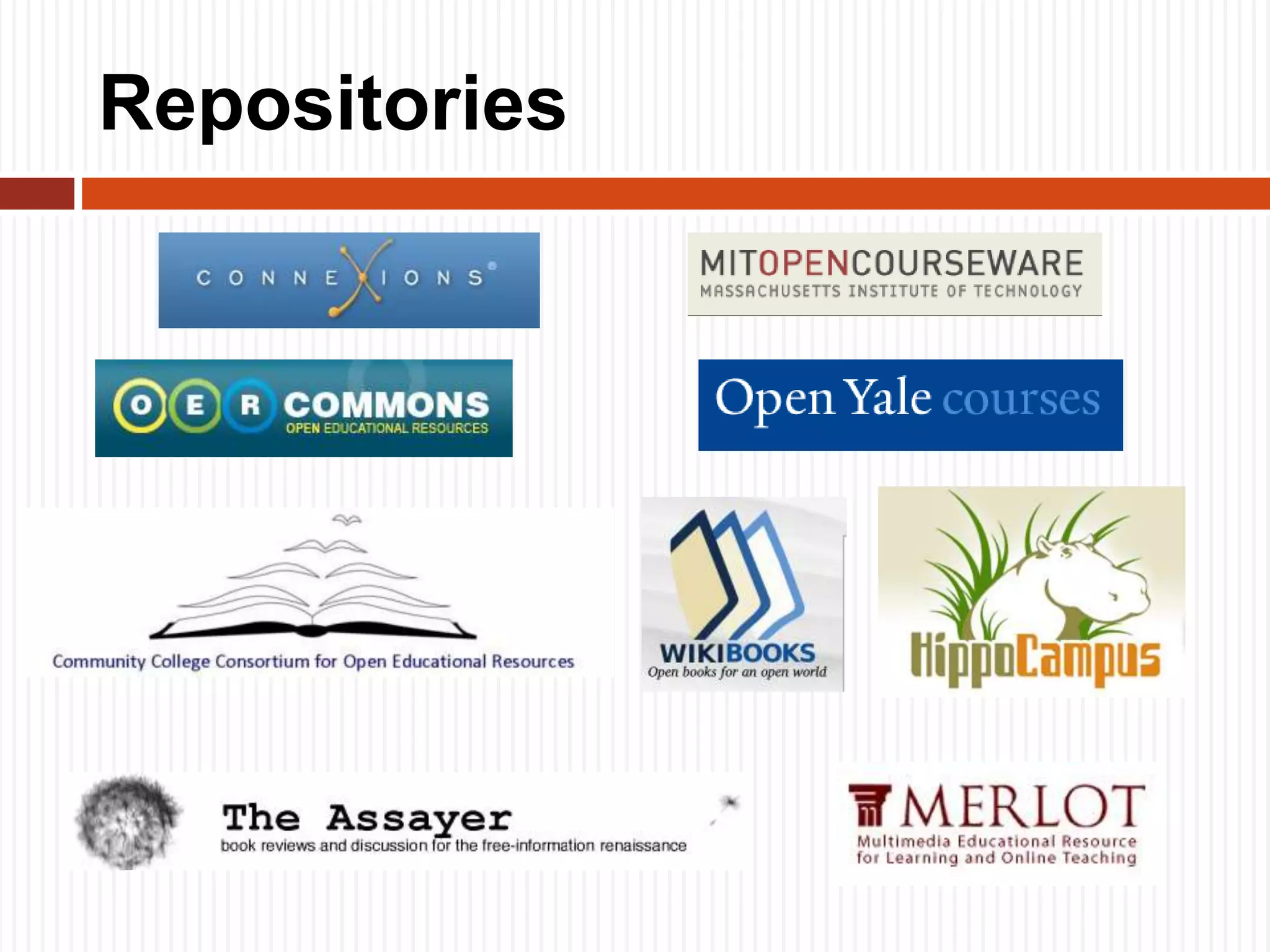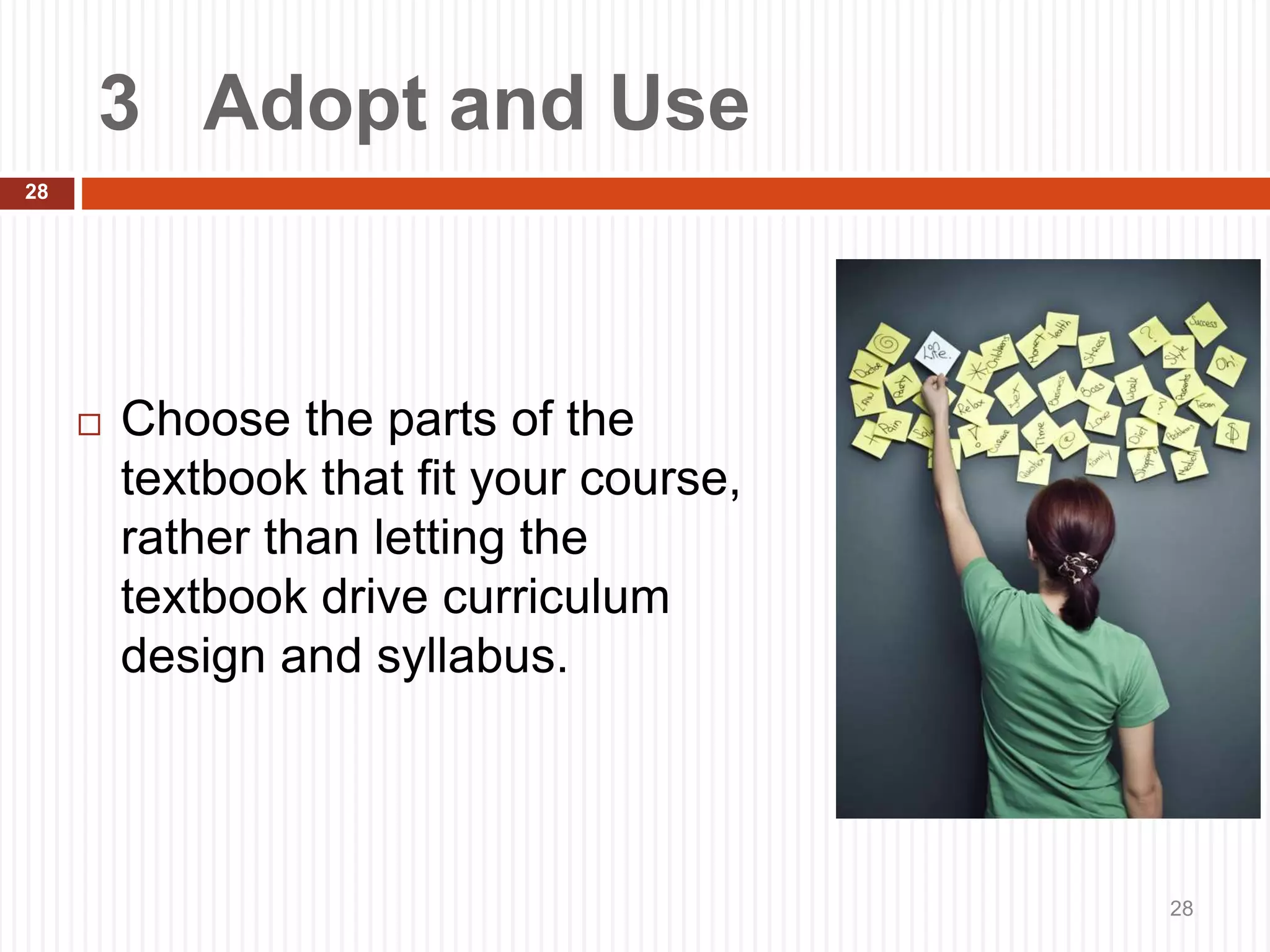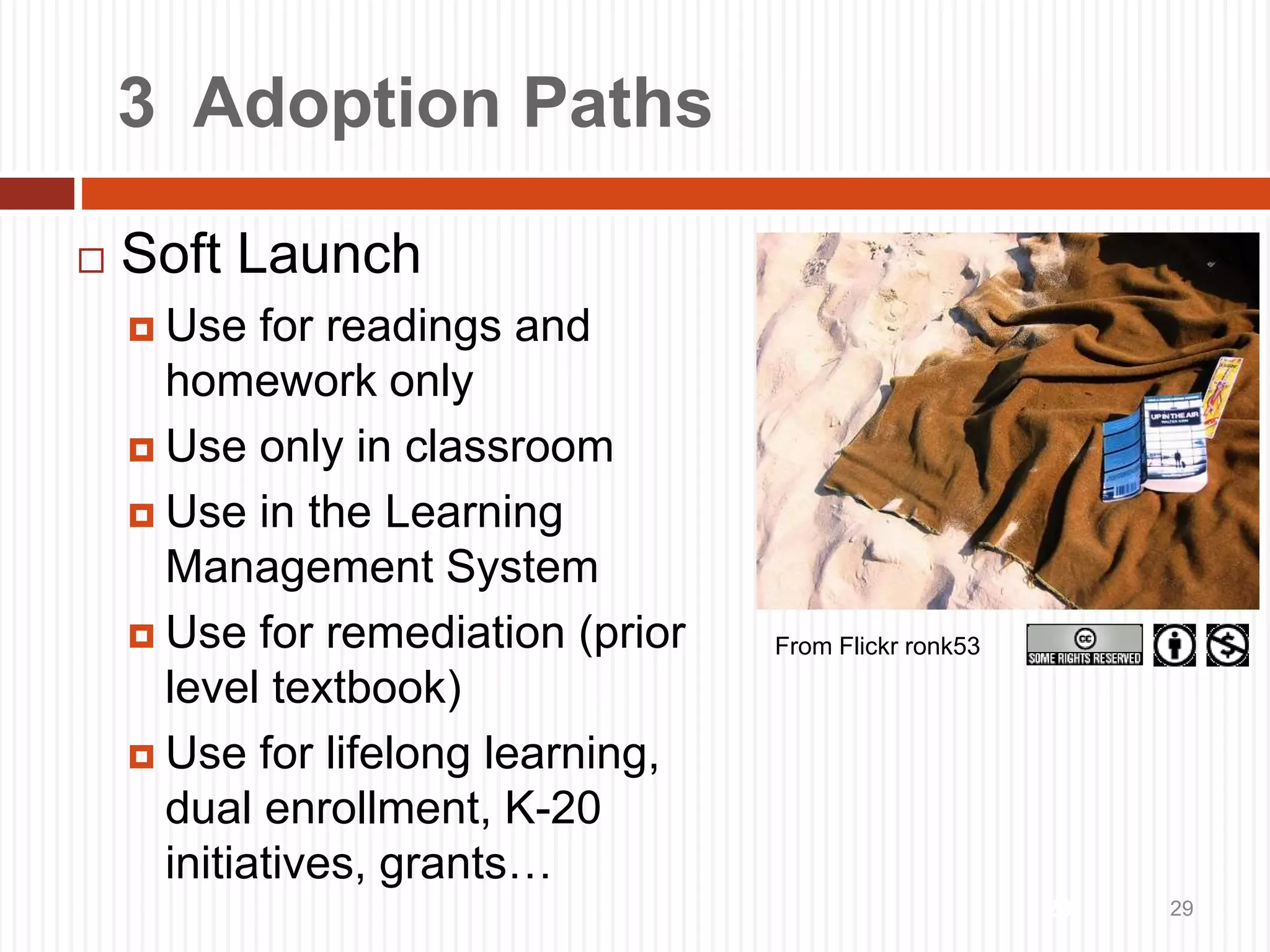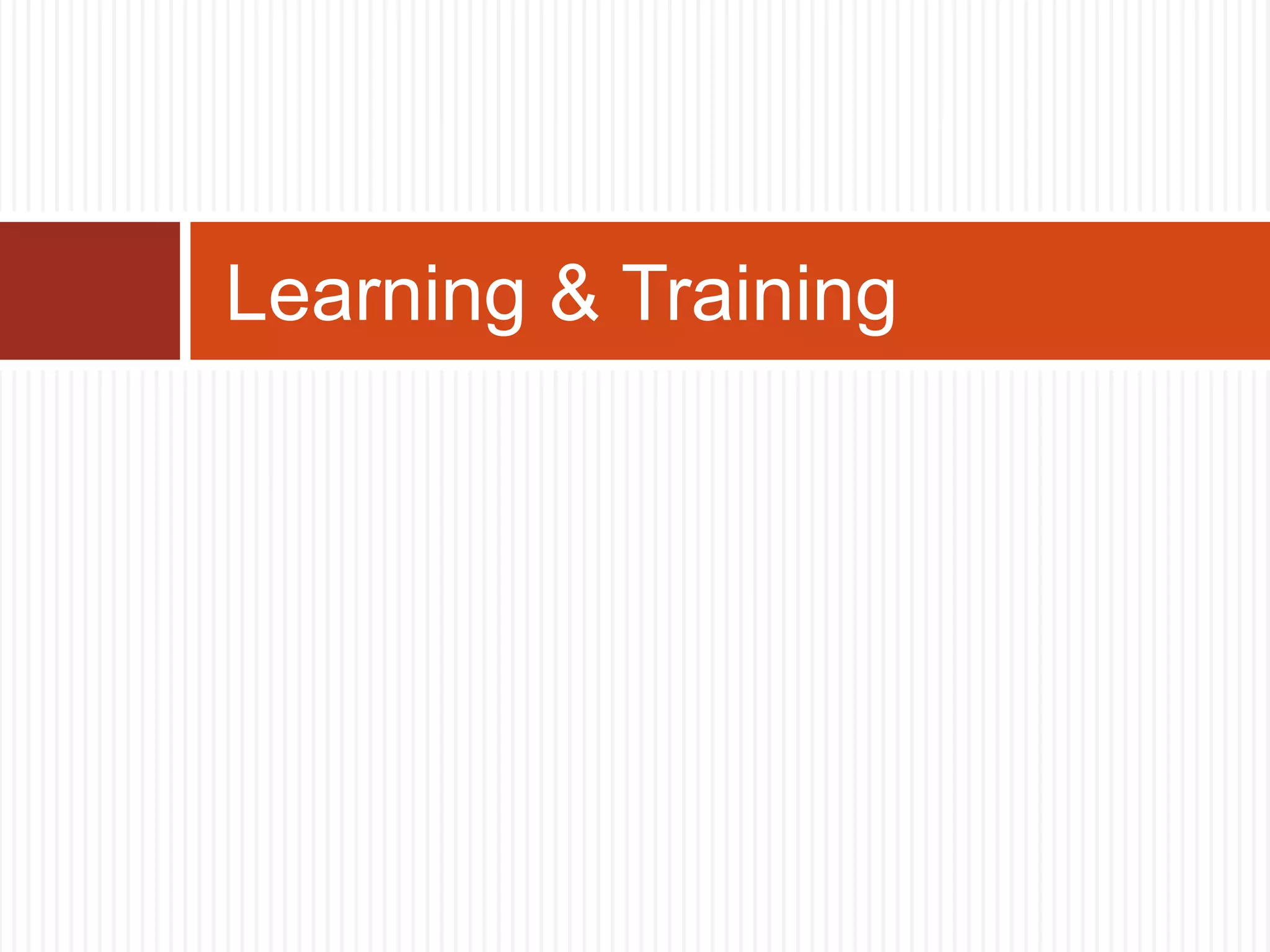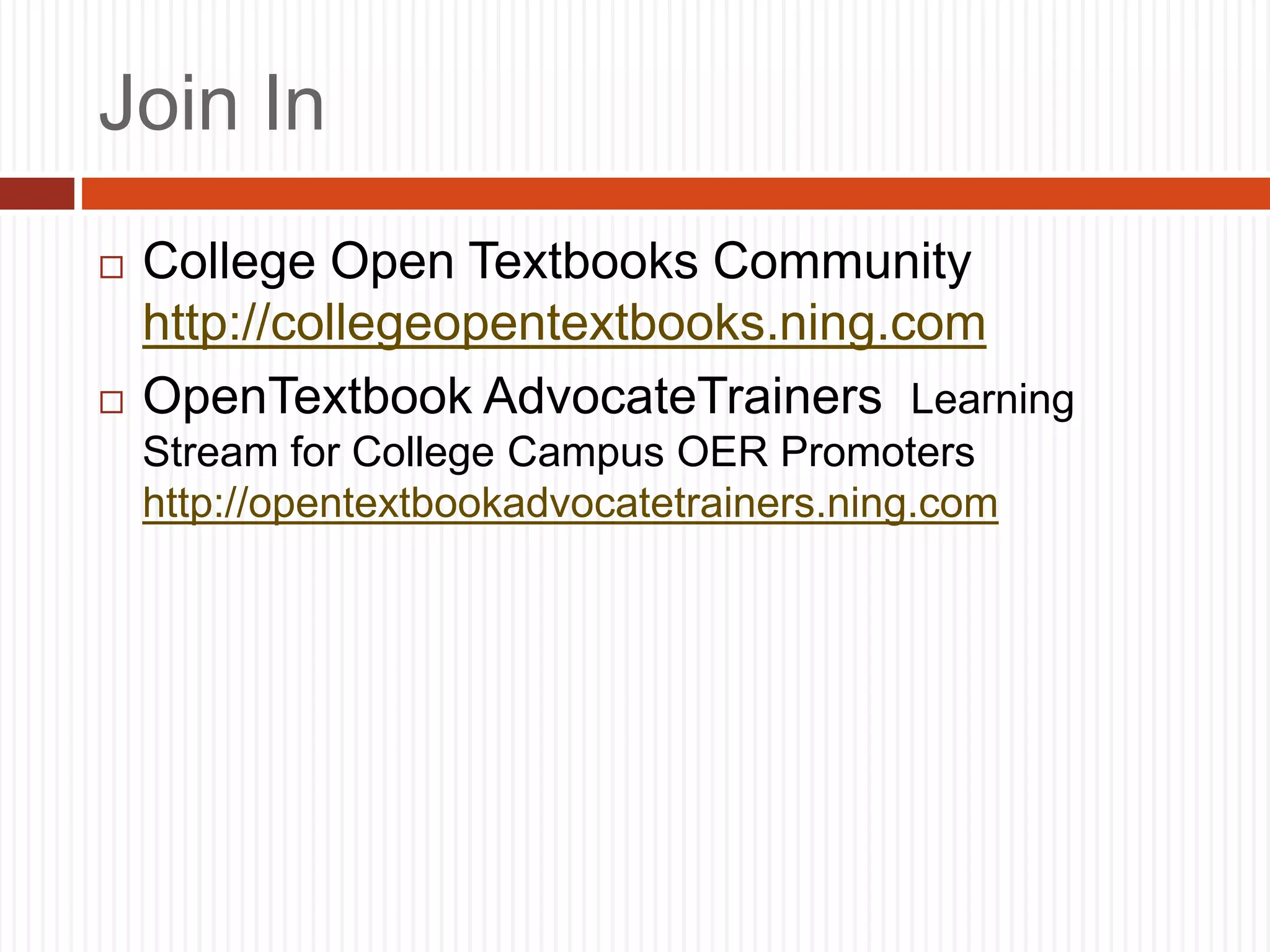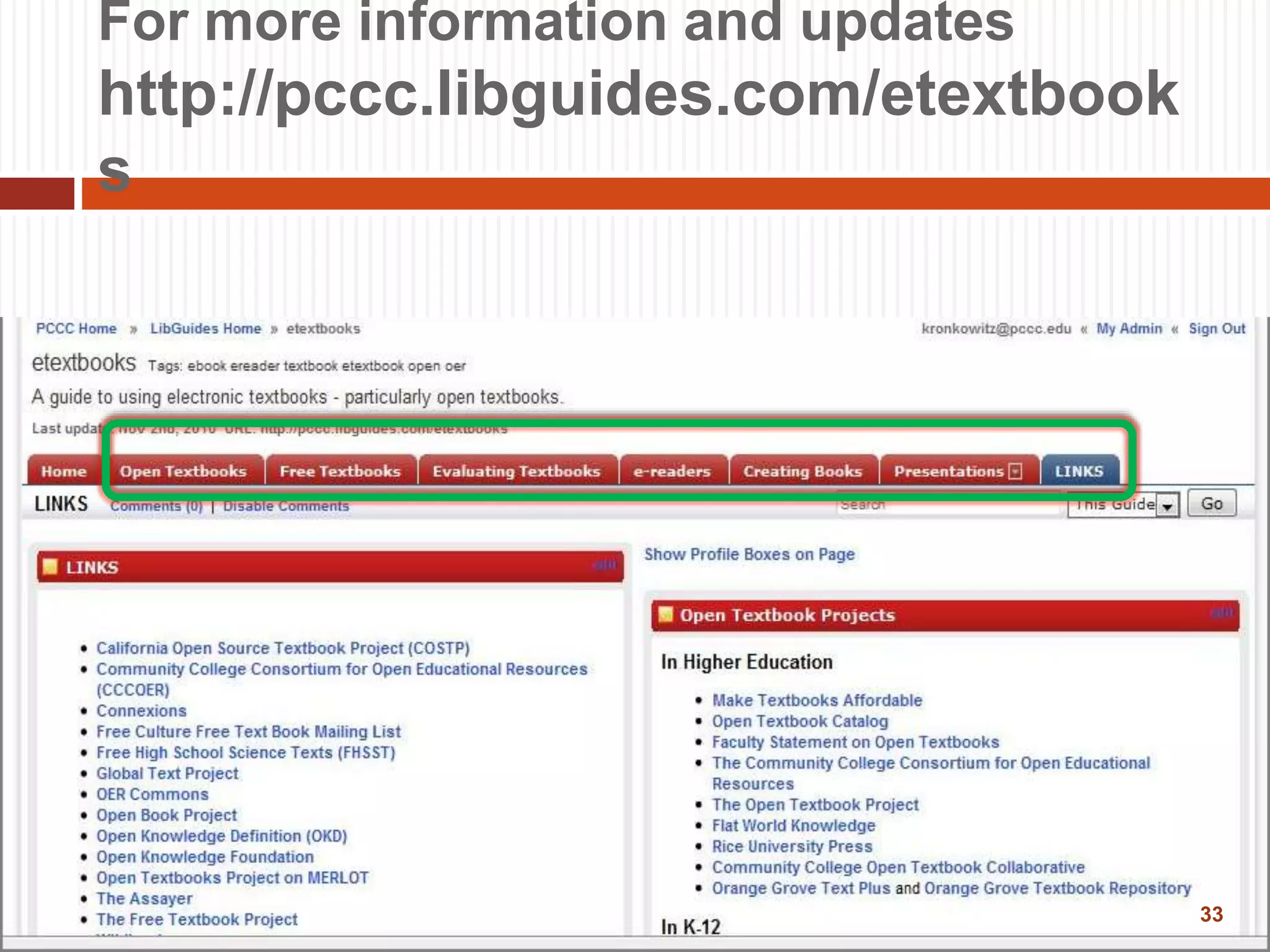The document discusses the adoption of open textbooks, which are freely available, easily customizable educational resources that cater to diverse learning styles and needs. It emphasizes the advantages of open textbooks over traditional and commercial etextbooks, including lower costs for students and the ability to modify content. Additionally, it outlines the process for identifying, evaluating, and adopting open textbooks, as well as training opportunities for educators.
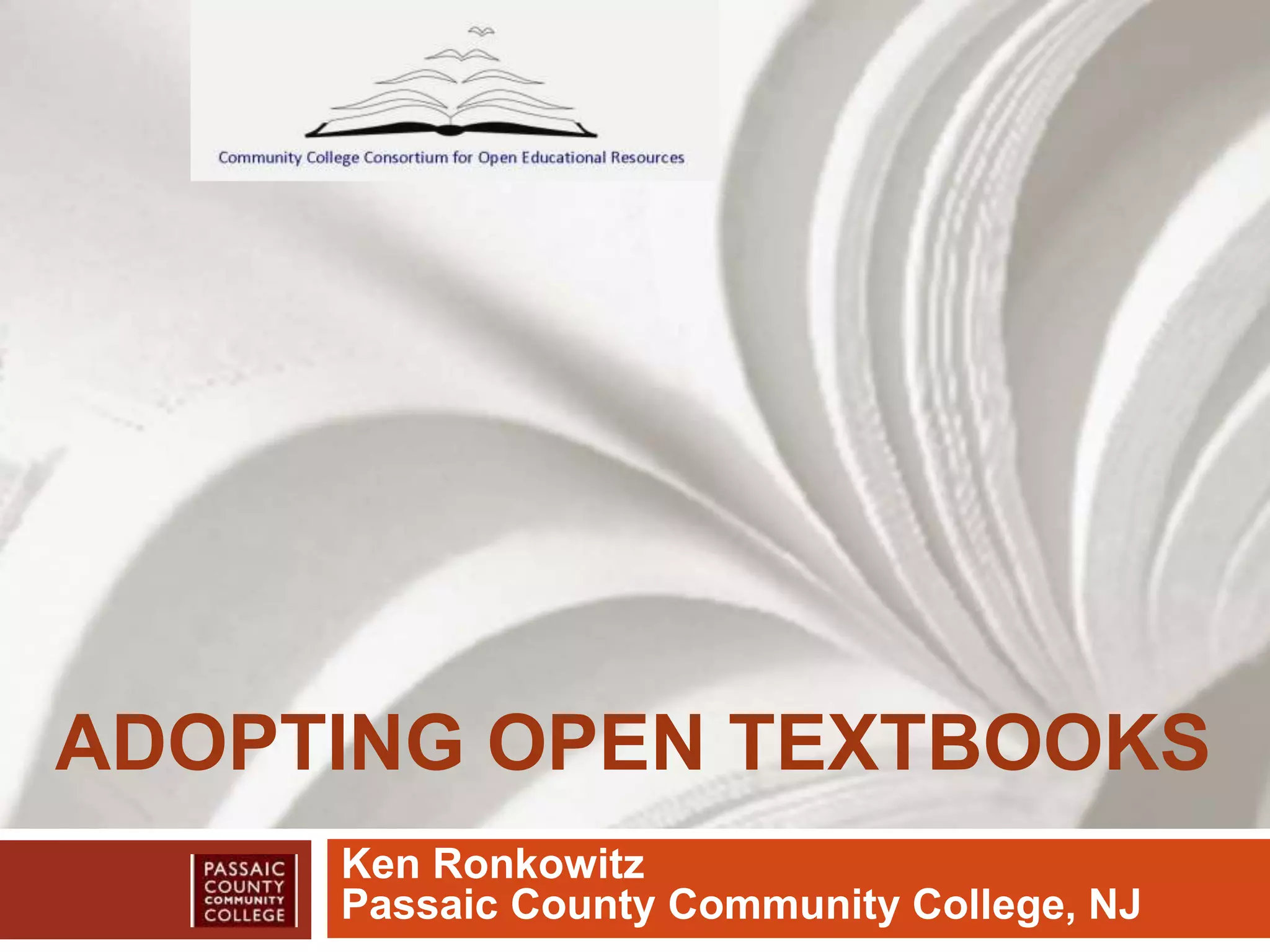
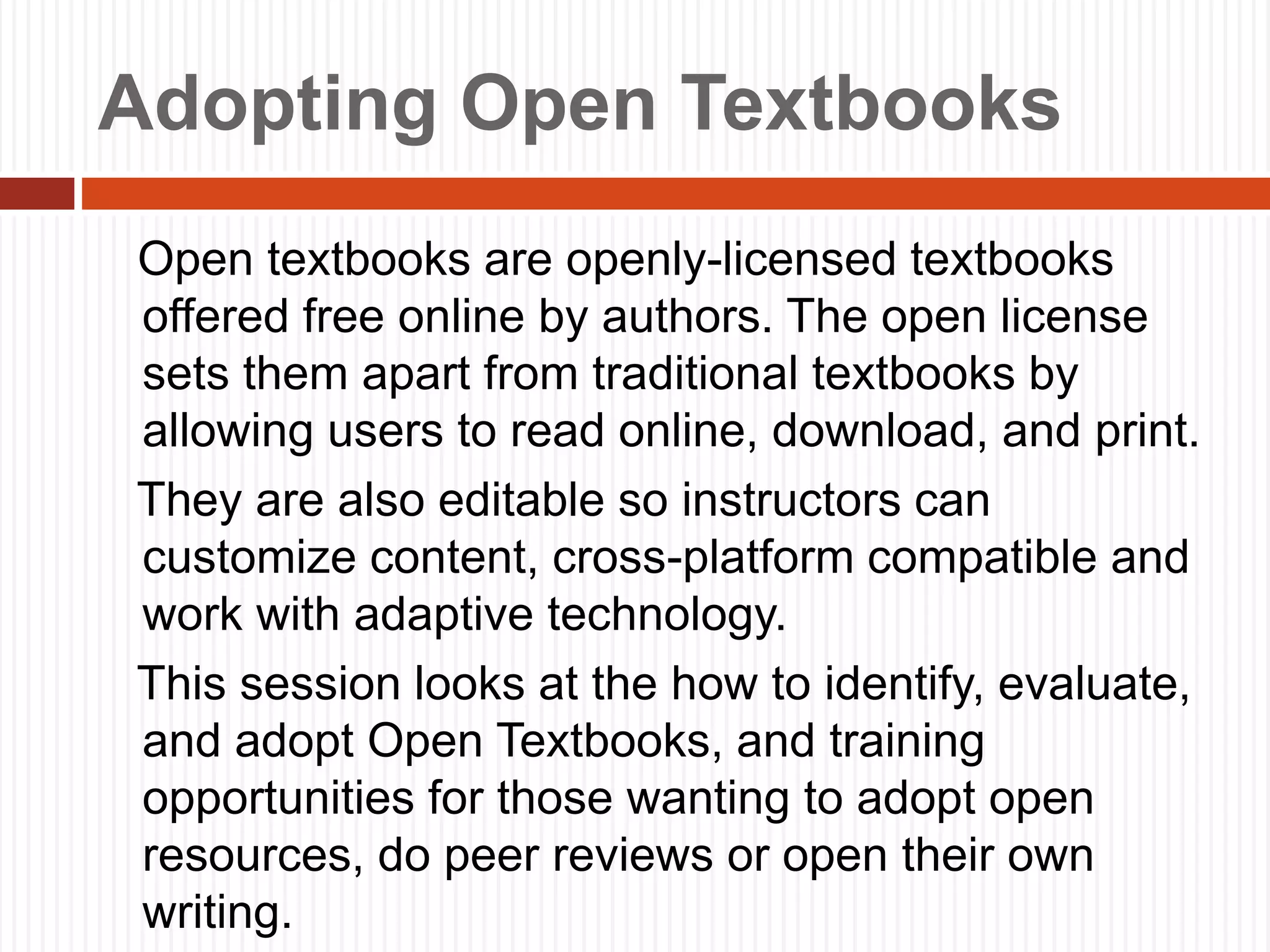
![3
Why leave traditional textbooks?
1. No textbook fits exactly and it’s all or nothing - though this
is changing…
2. Students complain
- about high prices - an average two-year college student
spends nearly 75% of what they spend on tuition on
textbooks
- if only a few chapters are used in the course
- when sent to different places for readings and materials
3. Textbooks are bundled with [too] many re$ources, labs
etc.
4. Print textbooks don’t have the advantages of eTextbooks
– but commercial eTextbooks are not open](https://image.slidesharecdn.com/opentextfortyca2010-101103224337-phpapp01/75/Adopting-Open-Textbooks-3-2048.jpg)
